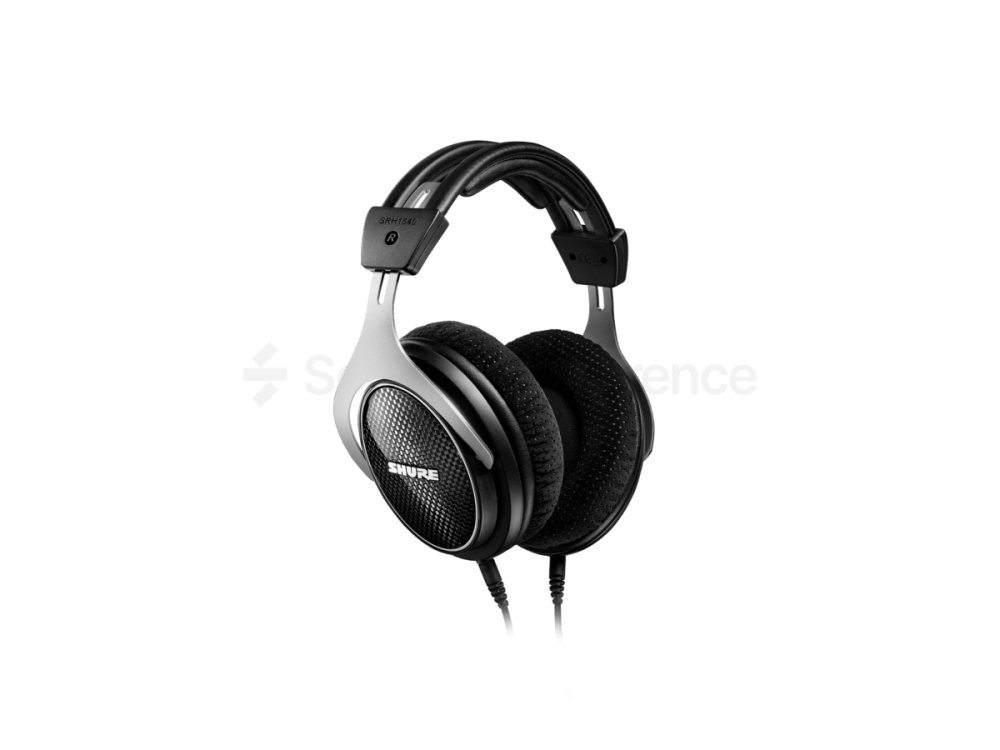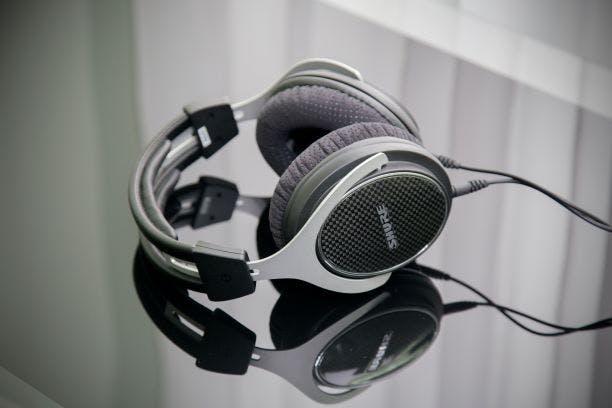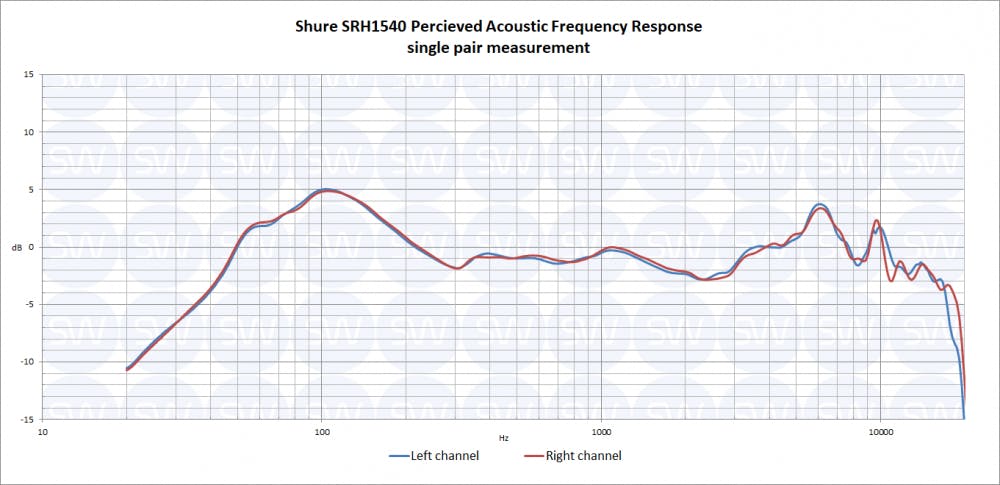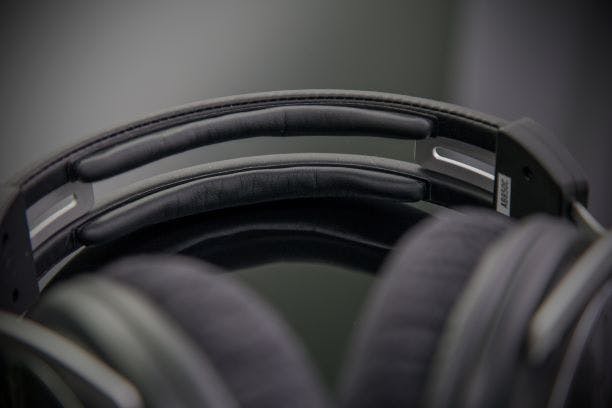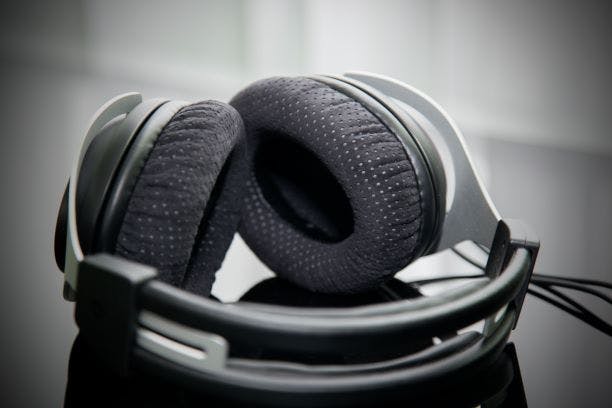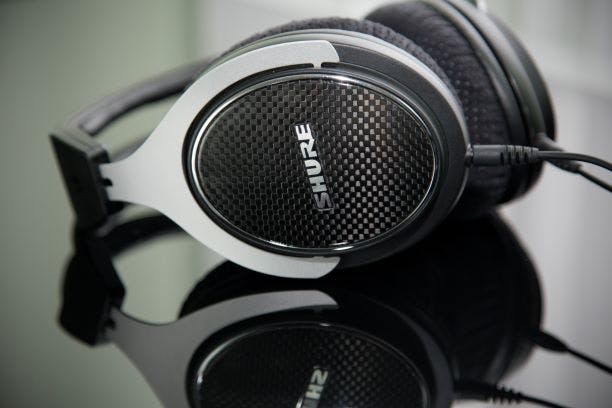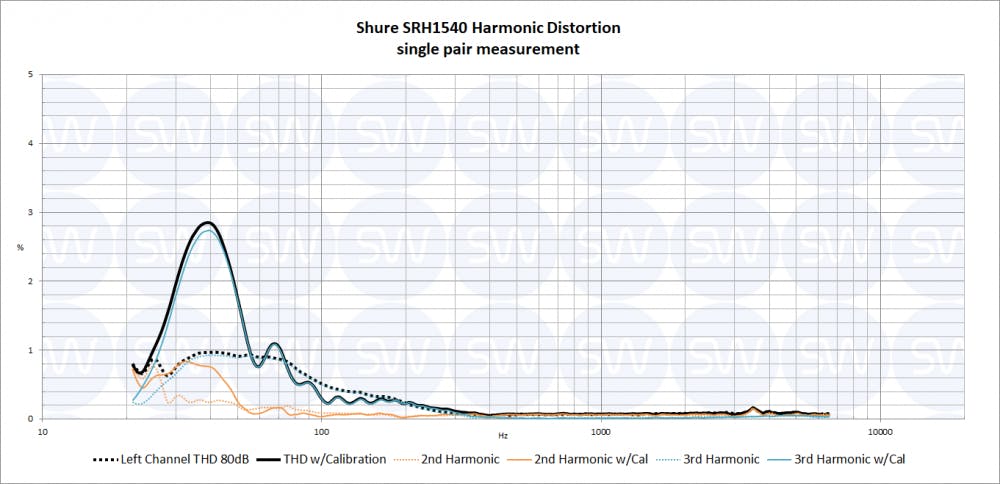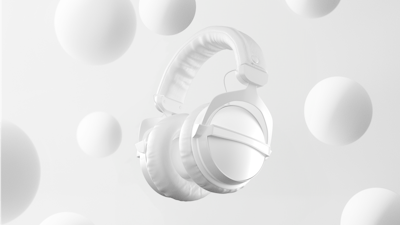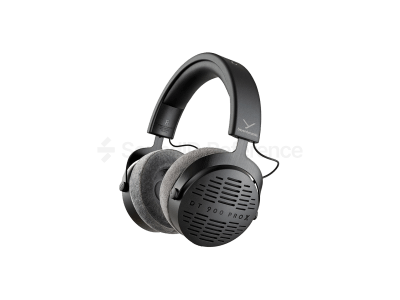Very often we get asked – which are the flattest sounding closed-back headphones out there? In regards to neutral frequency response, is there a Sennheiser HD 650 equivalent among closed-back headphones? Shure SRH1540 will be mentioned in answers to both of these questions. However, there are a couple of things to know before you grab your credit card. Read on!
- Exceptionally flat frequency response
- Lightweight
- Comes with two sets of ear pads and cables, and a sturdy hard case
Pros list with SoundID Reference calibration
- Improved both low and high frequency extension
- High 3rd harmonic distortion in the low-end
- Price
Shure SRH1540’s are built using lightweight materials more common in race cars than studio headphones – aircraft-grade aluminum alloy yokes, Alcantara covered ear pads, carbon fiber enclosure end caps. All these fancy parts are put together really well and the build feels durable. Ear cups are still plastic but that doesn’t take away from the premium feel and look of the headphones. Every little detail is pleasant to touch, including the cable. The spare ear pads and cable are a great inclusion and the extra sturdy transport case has a dedicated pocket or compartment for each of the accessories so it’s easy to take them with you along with the headphones, so you won’t get stranded with a broken cable.
Shure states that SRH1540 “steel driver frame with vented center pole piece improves linearity and eliminates internal resonance”. Headphone manufacturer marketing claims rarely can be backed up by our measurements but with SRH1540 it’s exactly the case.
All studio-oriented Shure closed-back headphones that we’ve ever measured are remarkably flat when compared to the competition and SRH1540 are the flattest of them all – like true flagship should be. SRH840 is a close second but SRH1540 has better low end extension and more smooth highs. Apart from the bump at 100 Hz, there’s a relatively little correction needed. The response deviates only +/- 3dB in an exceptionally wide range, from about 170 Hz all the way up to about 17 kHz. At the time of writing, out of the all closed backs we’ve measured, only the now discontinued Oppo PM-3 and the aforementioned Shure SRH840 come close in regards to neutral frequency response.
Out of the seven pairs measured, five had pretty much perfectly matched channels, but the other two had some flaws. One had a low-shelf like disbalance of 2.5 – 4 dB from 200 Hz down, which really isn’t appropriate for the price tag. The other one had similar issues but at more narrow bandwidth and lesser magnitude, making the disbalance nearly imperceivable.
Our testers had mixed feelings in regards to long listening session comfort. Unlike most other over-ear studio headphone designs, the ear cups can’t swivel, so there’s a set angle for ear pads and headband to rest against the listener’s head. If this angle matches the shape of your head, most likely you’ll find SRH1540 divinely comfortable, if not, it’s likely that after about an hour of use you’ll feel an uncomfortable pressure applied by the headband. According to some users online, the steel headband can be bent quite easily to tailor the ear cup angle to one’s head shape, which solves the headband pressure problem. Others mitigate this issue by applying additional DIY cushioning to the headband.
Nonetheless, the memory foam ear pads, wrapped in gentle Alcantara, were loved by everyone – they’re very comfortable and pleasant to wear.
SRH1540 cost about €500, which is a lot. All the fancy materials used in building SRH1540 don’t come cheap, I would imagine the research and development work involved to design so neutral-sounding drivers requires some resources as well. When it comes to closed backs with flat frequency response, these Shures are second to none, yet as an overall package, sadly, they’re still not perfect. The value score is dragged down by the relatively poor THD performance and comfort that’s less universally loved than some of its rivals.
In the pre-digital correction era, €500 for flat headphones would be fair enough, but now when you can get the same results with much more affordable hardware paired with headphone calibration software, SRH1540 seems more like a luxury one can easily do without. It’s a different story if you need headphones for computer-less setup though.
This is the greatest SRH1540 weakness. If you work with sub bass heavy material, unfortunately, you can’t expect completely transparent sound in the lows – the 3rd harmonic distortion rears its ugly head. There are numerous genres of music where this will not be an issue but if you require pristine transparency in the sub bass region, SRH1540 is not for you.
How accurate and consistent is the correction effect among different listeners?Adaptiveness is great, meaning the perceived acoustic power response will be very similar to most listeners and the calibration effect will be accurate.
How much do they differ pair to pair in terms of frequency response?Among the pairs measured there’s a +/- 3 dB spread in the low end below 100 Hz, but other than that they don’t differ much.
Rating
Conclusion
Work with a computer-less setup and want neutral-sounding headphones, and you don’t require pristine bass, and you have some cash to blow? SRH1540’s are for you! If only there wasn’t the THD issue and the comfort was more universal, SRH1540 would be the best closed-back studio headphones for anyone, period. They could’ve been perfect, hence every con feels especially harsh. However, If you work with acoustic music, classical, rock music, or basically anything without prominent sub bass – Shure SRH1540 are the best closed-back studio headphones you can buy. Just be sure to try them on for as long as possible to check the fit!
You can order individual calibration for your Shure headphones from our store here.
Continue to discover our top recommended PRO studio headphones here.
Final Rating
Calibration Enabled
Calibration
